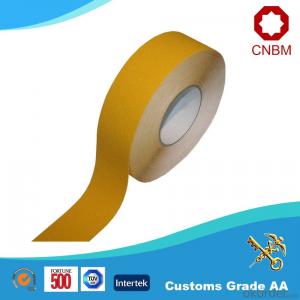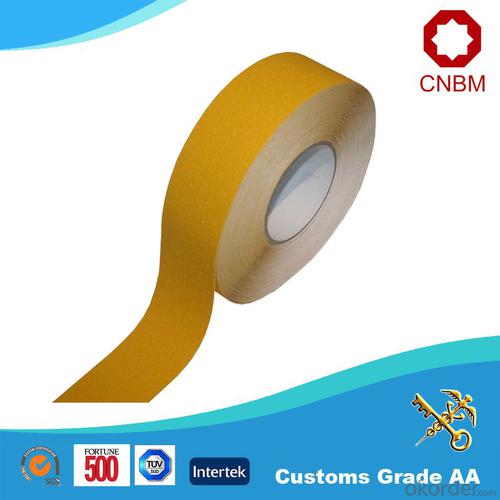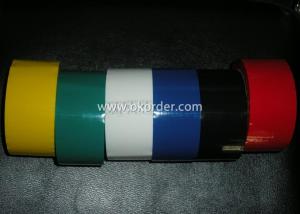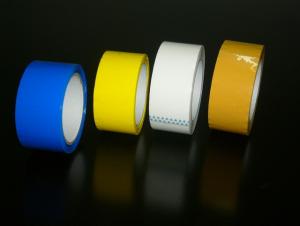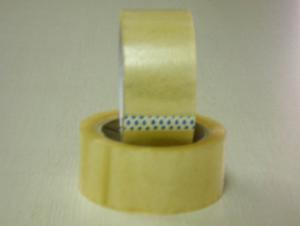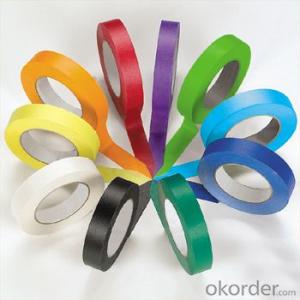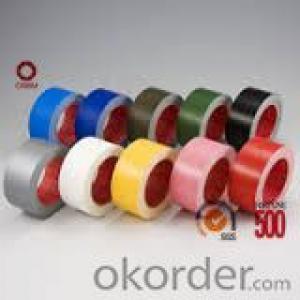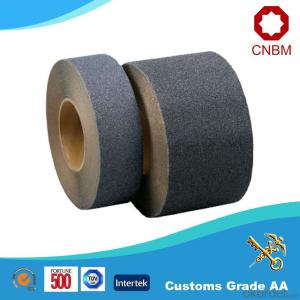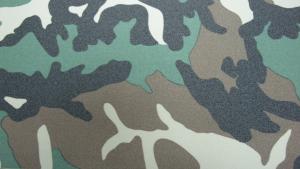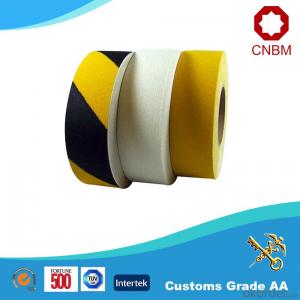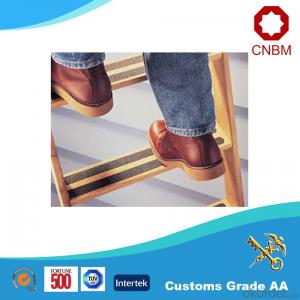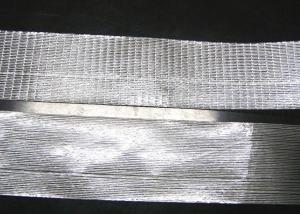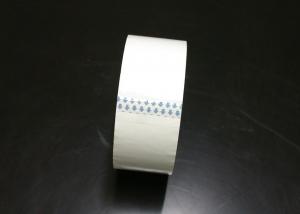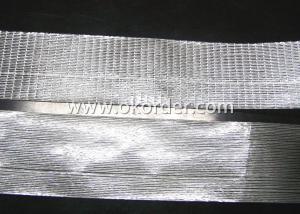China Printed Packaging Tape - Anti-Slip Tape with Pet for Sticking Pads
- Loading Port:
- Shanghai
- Payment Terms:
- TT OR LC
- Min Order Qty:
- 500 m²
- Supply Capability:
- 3000000 m²/month
OKorder Service Pledge
OKorder Financial Service
You Might Also Like
Specification
Anti-slip Tape with PET for Sticking Pads
1. Structure of Anti-slip Tape Description
base paper: white/leather silicone paper
base glue: silicon based acrylic
surface: choice anti-slip sand, rubber anti-slip fiber, sand-free special anti-slip material;
middle layer: PET, PP, PVC and aluminum, etc.
2. Main Features of Anti-slip Tape
High mechanical strength
Excellent in adhesion
Resistance to cold, heat
High Temperature stability
Printing Pictures
SGS and ISO9001
3. Anti-slip Tape Images
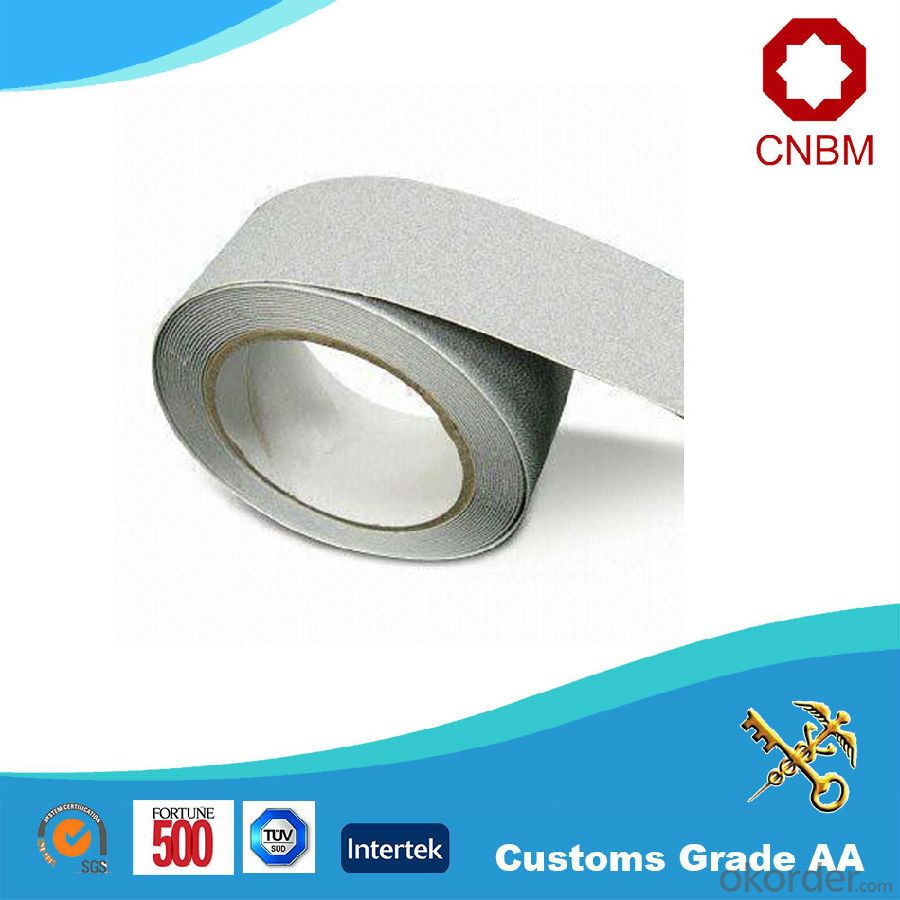


4. Anti-slip Tape Description
Item No. | Carrier | Thickness (c) | Anti-skid sand | Surface granularity |
CN-1107 | PVC film | 10 | black corundum | 120 items |
CN-1108 | PET film | 5.1 | silicon carbide | 45 items |
CN-1109 | PET film | 5 | white corundum | 60 items |
CN-1111 | PET film | 5.6 | silicon carbide | 90 items |
CN-1113 | PP film | 5.2 | white corundum | 70 items |
CN-1114 | PP film | 5.4 | white corundum | 80 items |
CN-1116 | PP film | 5.4 | white corundum | 120 items |

5. FAQ
Q1. Application:
1.sticking pads with PET, PVC, PP bases are recommended to be used on the plane or curved surfaces.
2.sticking pads with aluminum bases are recommended to be applied on the irregular arched surfaces.
Q2. What can we do for you?
24 hours service for you
Professional consultation on your local market
Custom-made advices for your need
Your inquiry will be replied within 12 hours.
Satisfactory sales service
Q3.What are the colors of Anti-slip Tape?
black, gray, red, orange, blue, between yellow and black, red and white, transparent, white, reflective, night light-emitting, etc. printing a variety of beautiful picture and patterns according with customer requirements
- Q: Are there different colors of packaging tape?
- Yes, there are different colors of packaging tape available.
- Q: Can packaging tape be used for sealing packages with hazardous materials?
- No, packaging tape should not be used for sealing packages with hazardous materials. Hazardous materials require specific packaging and sealing methods to ensure the safety of those handling and transporting the package. In order to meet regulatory requirements, hazardous materials should be sealed using approved methods such as special hazard tape, tamper-evident seals, or specific hazardous material labels. These methods help to clearly identify the contents of the package, prevent leakage or spillage, and provide necessary warnings and precautions for those involved in the transportation and handling of hazardous materials.
- Q: Selection of tapes
- We live in ordinary packing tape (BOPP BOPP) is the daily necessities for any enterprise, company, individual life indispensable, but compared to a situation at home, although many manufacturers, technology is uneven. Moreover, the technical content of the domestic adhesive tape industry is still in a very low stage, and the country does not have a clear choice. People often know the tape is in a very ignorant stage, think the price is low, feel good viscosity, in fact, these are wrong knowledge and judgment.
- Q: How do you choose the right packaging tape for your needs?
- When choosing the right packaging tape for your needs, there are several factors to consider. First, think about the type of items you will be packaging. If you are shipping heavy or bulky items, you will want a tape that is strong and durable, such as a heavy-duty or reinforced tape. On the other hand, if you are packaging lightweight items, a standard packaging tape may suffice. Next, consider the environment in which the package will be stored or transported. If the package will be exposed to extreme temperatures or moisture, you will want a tape that is resistant to these conditions, such as a weather-resistant or waterproof tape. This will help ensure that your package remains intact and protected throughout its journey. Furthermore, think about the surface you will be applying the tape to. If you are packaging boxes with smooth surfaces, a standard adhesive tape will work well. However, if you are packaging boxes with rough or textured surfaces, you may need a tape with a stronger adhesive, such as a acrylic or hot melt tape, to ensure proper adhesion. Additionally, consider the length and width of the tape roll. If you will be packaging a large number of items, you may want to choose a tape roll with a longer length to minimize the need for frequent replacements. Similarly, if you are packaging larger boxes, a wider tape roll may provide better coverage and security. Lastly, consider your budget. Packaging tapes are available in a range of prices, so it's important to find a balance between your needs and your budget. While it may be tempting to opt for cheaper options, remember that investing in a higher-quality tape can save you time, effort, and potential damages in the long run. By taking into account the type of items, environmental conditions, surface texture, roll length and width, and your budget, you can choose the right packaging tape that meets your specific needs and provides the necessary strength, durability, and security for your packages.
- Q: Can packaging tape be used for sealing bubble wrap?
- Certainly, bubble wrap can be sealed using packaging tape. Frequently employed as a safeguarding packaging substance for delicate objects, bubble wrap is often secured and sealed with packaging tape. By affixing packaging tape to the edges and joints of the bubble wrap, one can successfully seal it, guaranteeing its integrity during transportation or storage. The adhesive on packaging tape establishes a sturdy connection, assuring that the bubble wrap remains in position and offers supreme protection for the items it envelops.
- Q: The production of transparent tape material is what to do
- BOPP film can be produced by tube or flat film method. The BOPP films obtained by different processing methods have different properties. The BOPP film produced by the flat film method has a higher strength ratio (up to 8-10), so the strength is higher than that of the tube film, and the uniformity of the film thickness is better.
- Q: Can packaging tape be used for sealing office supplies or stationery?
- Yes, packaging tape can certainly be used for sealing office supplies or stationery. It is a versatile adhesive tape that is commonly used for sealing boxes and packages. However, when using packaging tape for sealing smaller items like office supplies or stationery, it is important to consider the size and weight of the item. If the item is lightweight and the packaging tape is not too wide or bulky, it can be a convenient and effective option for sealing. However, for smaller items, it may be more suitable to use other types of tape, such as clear tape or double-sided tape, which are specifically designed for sealing stationery and office supplies.
- Q: Can packaging tape be used for sealing plastic toolboxes?
- Yes, packaging tape can be used for sealing plastic toolboxes. Packaging tape is designed to securely seal boxes and packages, and it can be used on various materials, including plastic. It provides a strong and durable seal that can withstand normal handling and transportation. However, for long-term storage or heavy-duty use, it is recommended to use a stronger and more specialized tape, such as duct tape or strapping tape, as they offer better durability and adhesion.
- Q: Can packaging tape be used for sealing electrical or wiring components?
- No, packaging tape should not be used for sealing electrical or wiring components. It does not provide the necessary insulation or protection required for electrical components. It is recommended to use appropriate electrical tape or other approved methods to seal and protect electrical or wiring components.
- Q: Are there any safety precautions to consider when using packaging tape?
- Yes, there are several safety precautions to consider when using packaging tape. Firstly, it is important to ensure that you are using the tape in a well-ventilated area, as some adhesive fumes can be harmful if inhaled excessively. Additionally, it is crucial to handle the tape dispenser with care to avoid any injuries. Make sure to use proper hand placement and avoid placing your fingers too close to the cutting blade to prevent accidental cuts. Furthermore, when using packaging tape, it is advisable to wear appropriate protective gear, such as gloves, to protect your hands from any potential adhesive residue or cuts. Lastly, it is essential to store the tape in a safe and secure place, away from children or pets, to prevent any accidental ingestion or misuse. By following these safety precautions, you can ensure a safe and efficient use of packaging tape.
Send your message to us
China Printed Packaging Tape - Anti-Slip Tape with Pet for Sticking Pads
- Loading Port:
- Shanghai
- Payment Terms:
- TT OR LC
- Min Order Qty:
- 500 m²
- Supply Capability:
- 3000000 m²/month
OKorder Service Pledge
OKorder Financial Service
Similar products
Hot products
Hot Searches
Related keywords
